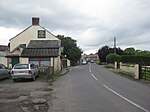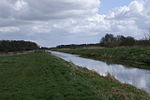Westhay Heath
Nature reserves in SomersetSites of Special Scientific Interest in SomersetSites of Special Scientific Interest notified in 1990Somerset LevelsWetland Sites of Special Scientific Interest

Westhay Heath (grid reference ST415422) is a 25.9 hectare (64.0 acre) biological Site of Special Scientific Interest 2km west of Westhay village in Somerset, notified in 1990. Westhay Heath, which is managed by the Somerset Wildlife Trust is an area of tall fen vegetation containing scrub, marshy grassland, ditches and small ponds in the heart of the peat moors on the Somerset Levels. This mosaic of habitats has developed on areas previously used for peat extraction. The site is of importance for the presence of a nationally rare fen community, including a diverse assemblage of breeding and wintering birds.
Excerpt from the Wikipedia article Westhay Heath (License: CC BY-SA 3.0, Authors, Images).Westhay Heath
Burtle Road,
Geographical coordinates (GPS) Address Nearby Places Show on map
Geographical coordinates (GPS)
| Latitude | Longitude |
|---|---|
| N 51.17603 ° | E -2.83823 ° |
Address
Burtle Road
Burtle Road
BA6 9TT , Meare
England, United Kingdom
Open on Google Maps











